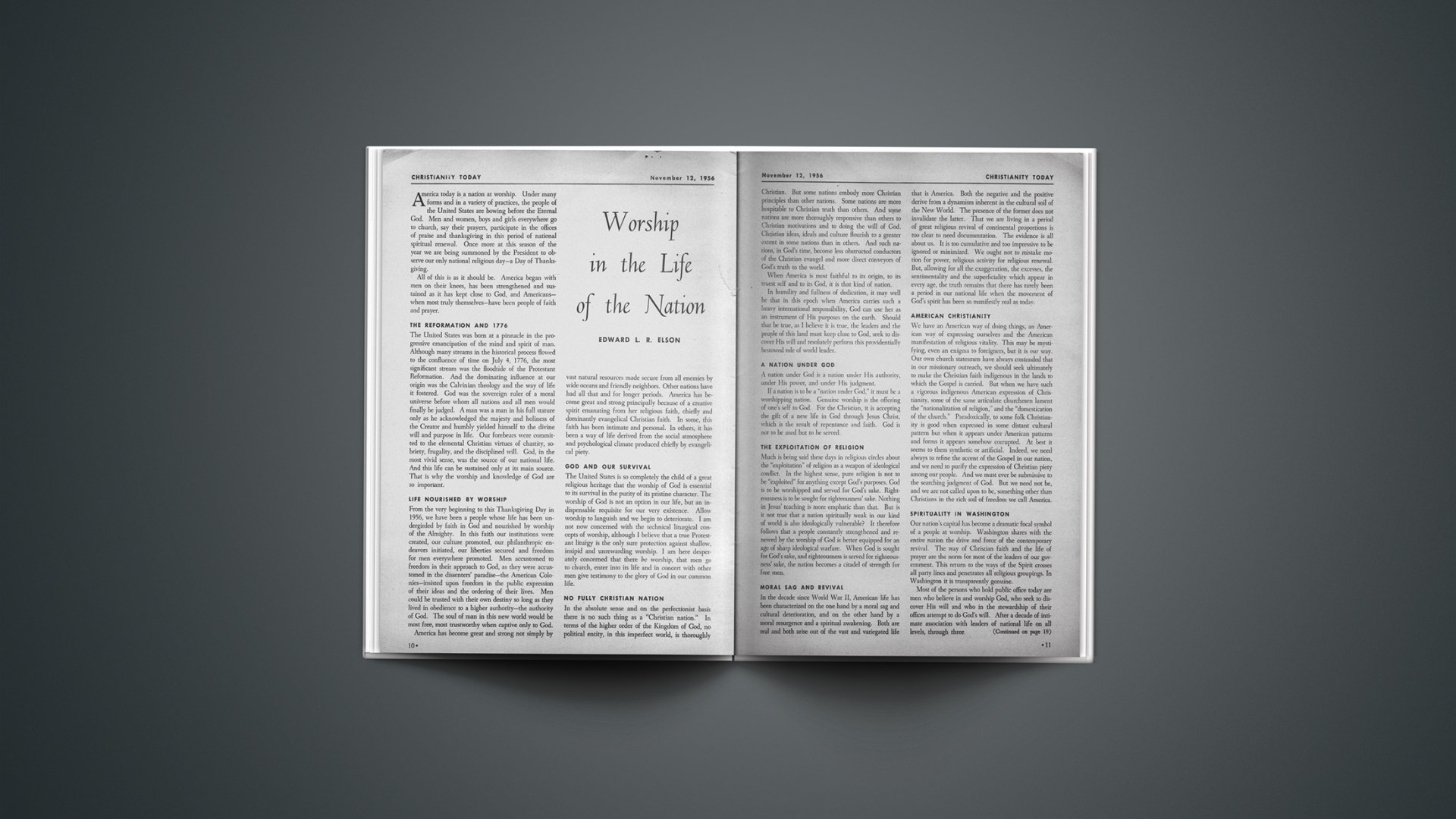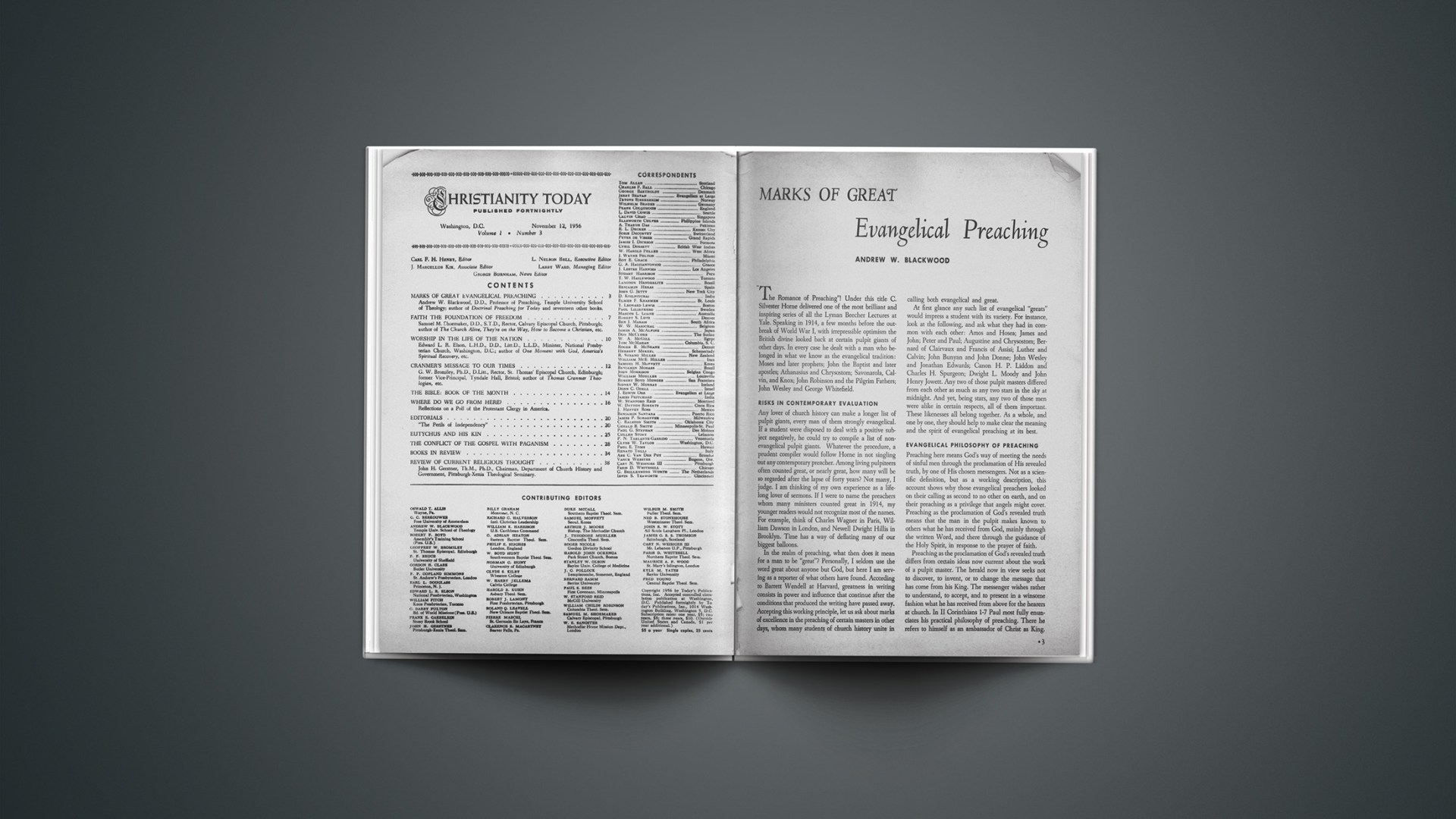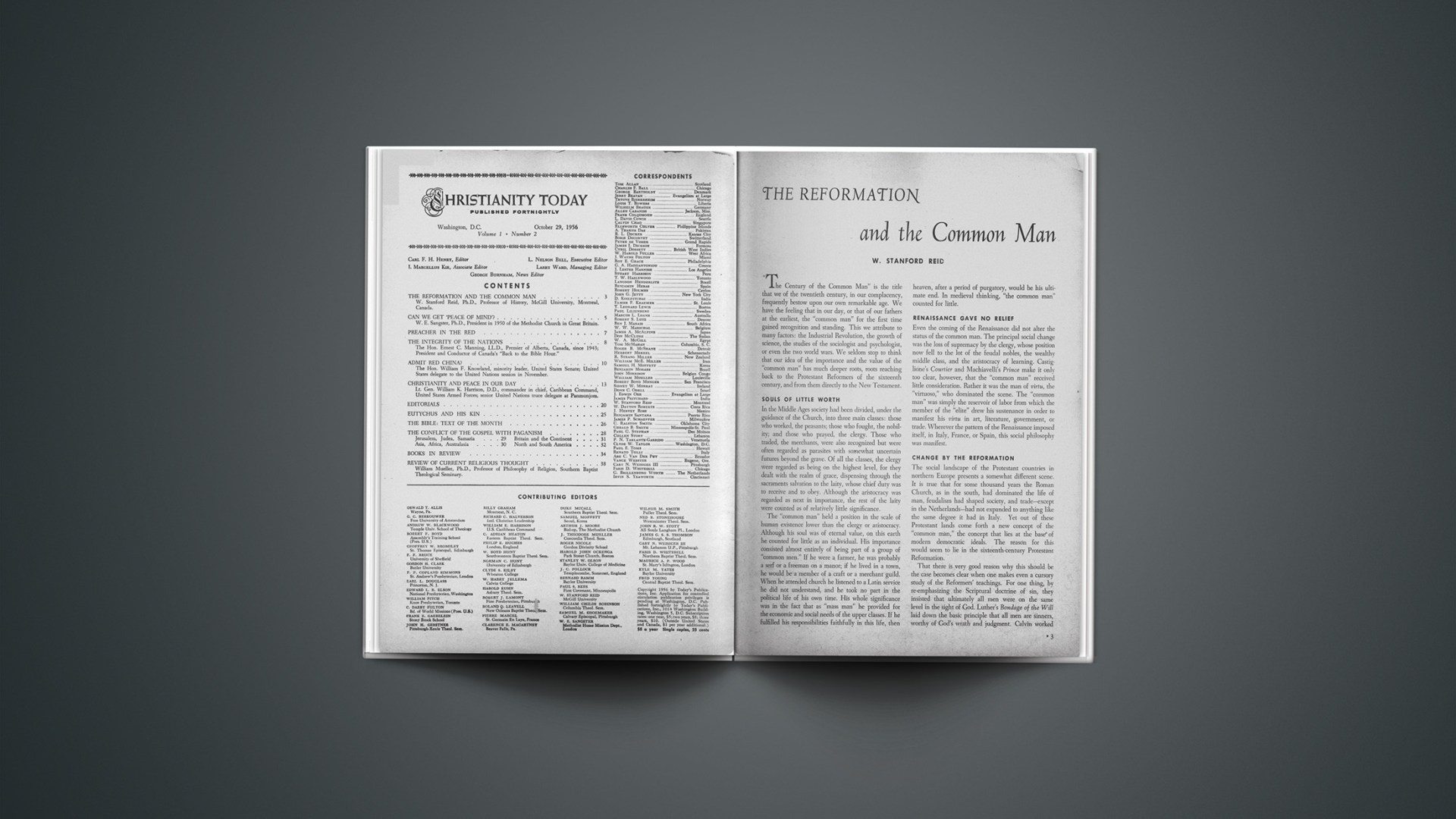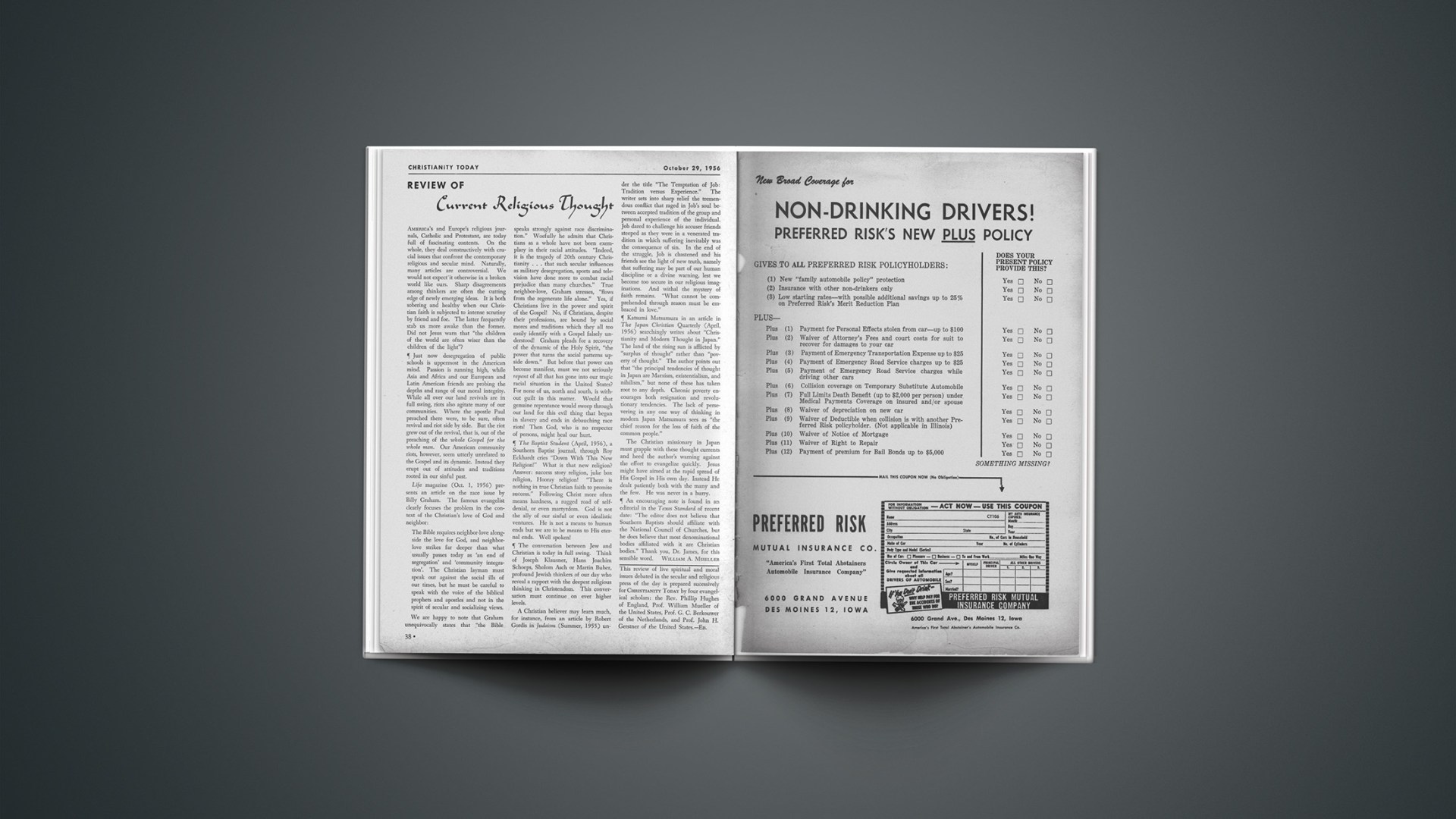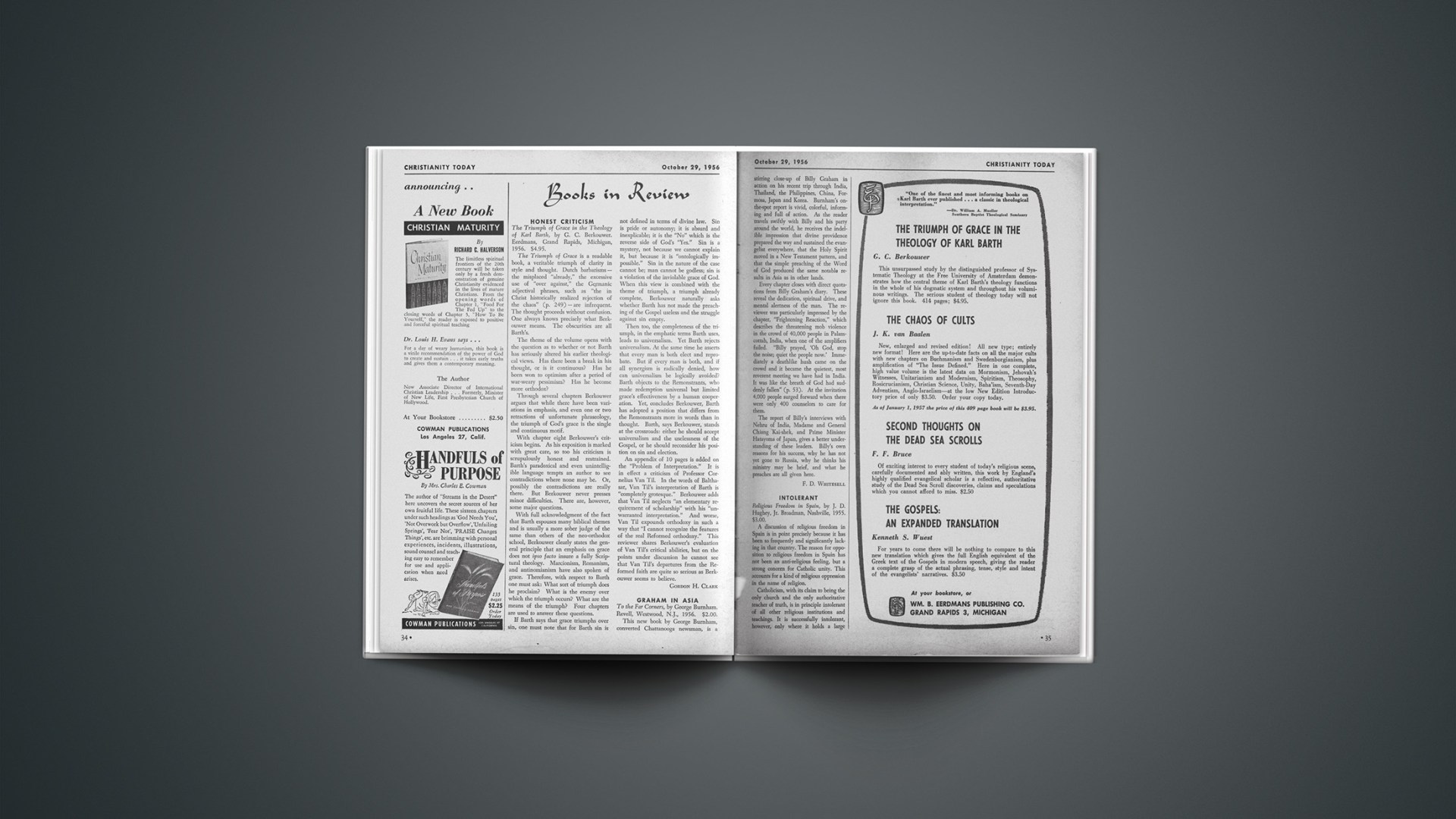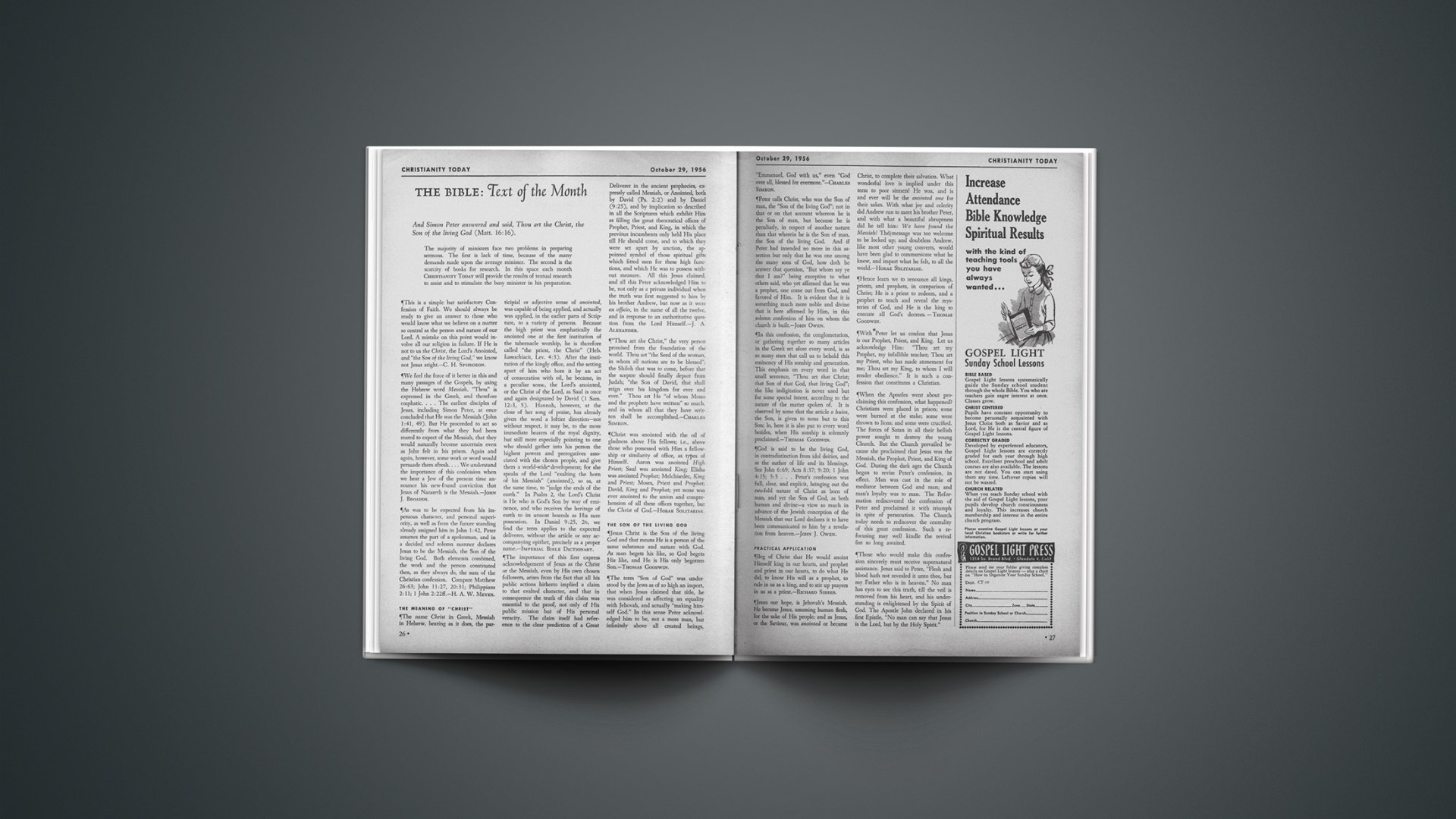In 1936, C. H. Dodd, a leading New Testament scholar of Great Britain, said concerning John, “I am disposed to think that the understanding of this Gospel is not only one of the outstanding tasks of our time, but the crucial test of our success or failure in solving the problem of the New Testament as a whole.”
What is the problem of the Fourth Gospel? It is a multiple problem involving authorship, relation to the Synoptic Gospels, the religious milieu upon which it draws for its ideas, and its historical character.
The amount of literary labor expended on John is immense. A glance at the book shelves in the present writer’s study reveals more volumes on John than on the other three Gospels combined. Our British friends have been particularly active in this field over the years.
Authorship
A practically unbroken line of testimony from the ancient Church assigns the Gospel to John the son of Zebedee. If it be objected that the first clear-cut witness is Irenaeus in the latter part of the second century, which is rather late, one may reply (1) that the period before Irenaeus is one of comparative silence on the literary side, (2) that the lack of positive testimony to John’s authorship in this early period may well be due to the use of the Gospel by the heretical Gnostics, (3) that the testimony of Irenaeus gains in weight when it is recognized that only one person linked him to John, namely, the saintly Polycarp.
The counterclaim that John died at an early age, though supposedly derived from Papias, who lived a half-century before Irenaeus, actually comes from sources several centuries later. If this was really put forward by Papias, one would expect the early Church fathers to have taken some note of it. Since the inspiration for such an opinion, no matter what its source, is the saying of Jesus to the sons of Zebedee about drinking His cup, the report may safely be dismissed as having arisen out of a need to fulfill Jesus’ prediction.
Some moderns have been attracted to the notion that John the Elder, a rather shadowy figure who is supposed to have lived at Ephesus, may be the real author. When this viewpoint takes the form that the afore-mentioned John was scarcely more than an amanuensis, little objection need be raised. But to assume that another John who stood outside the apostolic circle is responsible for the Gospel creates needless difficulty. Would the Church be inclined to receive into its canon of Scripture an account so different from the tradition embodied in the Synoptics, which were already in use and which rested upon apostolic authority? The only circumstance which would suffice to clear this hurdle is the indisputable apostolicity of the book.
The Johannine authorship has had and continues to have scholarly support over the last half-century despite many voices clamoring against it. Such men as Ethelbert Stauffer of Erlangen, A. C. Headlam, Scott Holland, J. Armitage Robinson, and H. P. V. Nunn affirm the traditional position.
Relation To Synoptic Gospels
Ninety per cent of the material in the Fourth Gospel is unique, having no counterpart in the others. Lacking is any account of the birth of Jesus, His baptism and temptation, the transfiguration, the parabolic teaching, and the Eucharistic sayings of our Lord. A few miracles (signs) chosen out of many serve as the foil for a series of discourses in which some of the many aspects of Christ’s person are given prominence. Peculiar to John is the long discourse in the Upper Room.
This Gospel contains a framework of history that is wanting in the Synoptics. From it we obtain the perspective of a ministry considerably longer than the single year accounted for by the other Evangelists. In particular, John opens to us the Judean ministry. To Scott Holland belongs the credit of showing not only that the Synoptics presuppose such a ministry—others have pointed out that the friends at Bethany, the owner of the colt, the good man of the house at Jerusalem, as well as the “how often” in Jesus’ lament over Jerusalem demand His presence there on previous occasions—but of showing that the Synoptics are really unintelligible without the Judean ministry reported by John. The withdrawal to Galilee and the conduct of the mission there, noted in the Synoptics (Matt. 4:12), have their explanation in the opposition stirred up against Jesus by reason of His early activity in Judea.
Though the Synoptics sketch the determined ascent to Jerusalem at the climax of the ministry and treat the issue as predetermined, since the city has had its time of visitation and has not perceived it, only the activity of the Lord in the holy city prior to this time, as told by John, explains the situation. One could wish that every Christian had the opportunity to read the tremendous passages by Scott Holland on this subject.
Relation To Contemporary Thought
On the question of John’s relation to the world of religious and philosophical thought of his time, the safest verdict is that he was not unacquainted with what his contemporaries were thinking and saying, and that he used their conceptions as steppingstones to lead them to a heightened appreciation of Christ. Such may well be the import of his introduction of the Son of God as the Logos in the prologue and the rather frequent recurrence of the word know. The Hermetic literature of Egypt abounds in this emphasis as well as in allusions to light and life. The uniqueness of John lies in the presentation of Jesus Christ as the indispensable means of knowing God the Father and as the One in Whom men must trust if they would know.
C. H. Dodd has been so impressed with the Hellenic background of the Fourth Gospel that he concludes the book must have been written to make converts to Christianity among intelligent Hellenes. But this flies in the face of the declared purpose of the writing—that the readers may continue to believe (the literal force of the verb in 20:31). At various points in the Gospel, John emphasizes the increased demand for faith that Jesus placed upon His followers. Corresponding to this, we are permitted to observe from time to time the heightened response of the Twelve to this demand. The book was written for believers, and for those familiar with the Synoptic tradition, but written in such a way as to present the claims of Christ to the unbeliever.
Historical Character
The tradition, in part old, in large part put forward here for the first time, at least in written form, is presented by John not merely as a recital of events but even more as an interpretation of the person of our Lord. The strong insistence on the Word made flesh (1:14) constitutes a protest against the Docetizing tendency already at work in the first century.
Sometimes it has been asserted that this Gospel has a mystical approach to Jesus, but this is misleading, for mysticism is careless of historical considerations. In its extreme form it calls for identification with the deity. John, like the rest of the writers of the New Testament, preserves the distinction between God and the creature despite the wonder of the new life in Christ.
The Gospel’s Value
The book has immeasurable value both for the preacher and the teacher of the Word. Evangelistic texts dot its chapters by scores and hundreds. No Christian teacher can ignore the Gospel, especially the incomparable Upper Room discourse.
It may be said of this book more truly than of any other in the New Testament that it may be studied on more than one level. Even the most elementary approach yields great blessing. On the other hand, the theologian cannot exhaust the truths suggested here.
John may be approached from various standpoints, such as the discourses, where the writer, much like Paul in Galatians 2, starts with a definite historical situation and glides into theological reflection based upon it. Or one may make a study of the signs, or of the I Am’s, or of the ruling concepts that are mediated through the recurring key words: light, life, truth, glory, know, believe. Again, one may trace the Tabernacle structure through the book, using 1:14 as the starting point. Fine sermonic material may be gleaned from a study of the individuals found here, many of whom are scarcely more than names in the Synoptics. In John they become characters. We see them develop under the tutelage of Christ.
Tools For Exposition
Of the older works, Godet and Bishop Westcott have an abiding usefulness. Among the newer volumes, William Temple’s Readings in St. John’s Gospel (1945) is not detailed but suggestive. In 1940 appeared E. C. Hoskyn’s commentary, treating John mainly from the standpoint of its theological implications. No one should miss consulting this work. One of the latest is by C. K. Barrett (1955). It is more valuable for its long introduction than for its comments.
Among American writers mention should be made of M. C. Tenney’s John, the Gospel of Belief (1948), R. C. H. Lenski’s The Interpretation of St. John’s Gospel (1931) and William Hendriksen’s two volumes (1953).
Two works that are not really commentaries are nevertheless pertinent because of their attempt to unfold the thought of the Gospel. C. H. Dodd, The Interpretation of the Fourth Gospel (1953), explores John in terms of contemporary religious and philosophical thought in the Hellenic world. Rumor has it that Dr. Dodd is planning to continue his studies in a second volume. W. H. Rigg, The Fourth Gospel and Its Message for Today (1952), is less concerned with the extrabiblical approach. He seeks to expound the great themes of the Gospel in terms of the message itself.
Students of the Upper Room discourse will find T. D. Bernard’s The Central Teaching of Jesus Christ (1892) richly rewarding. For a treatment of our Lord’s prayer in chapter 17, nothing surpasses Marcus Rainsford’s Our Lord Prays for His Own, since 1950 once more available. Another valuable commentary, but not so readily obtainable, is John Brown’s “Exposition of John XVII” (1850) which Spurgeon described as “deep, full, and overflowing.”
Though it is not a commentary, W. F. Albright’s contribution to The Background of the New Testament and Its Eschatology (1956) is valuable for its support of the historical trustworthiness of the book from the standpoint of archeology.




